Different cities and lines have variations on the looks and themes for subway stations, but in general they follow some common features. The entrance is almost always covered, there is usually a step up to block excess rain water from entering, they can be used as shelters in case of an emergency, there is a tall pole with station and exit information, there is at least one elevator for those with mobility issues or heavy baggage, and each exit has its own number.
Here is a station from Daejeon that is close to the Government Complex and one of the stops for airport buses. It’s located near a city bus stop and has several exits near a major intersection. If you want a closer look, click the image to see a larger size.
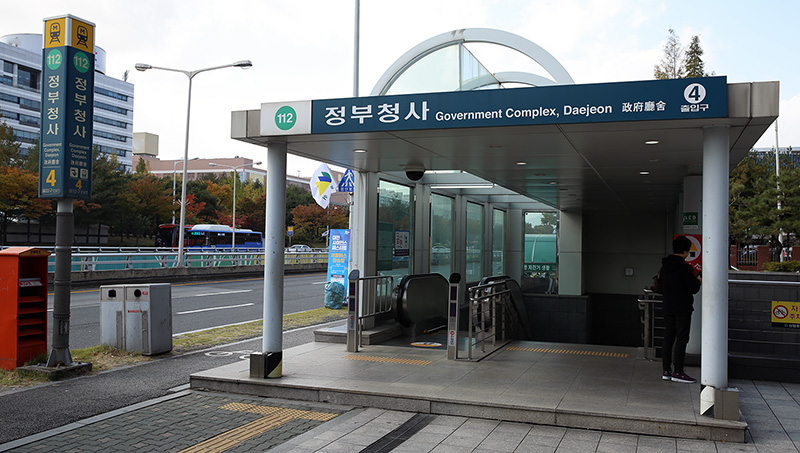
We see an aqua green color, which is the line for Daejeon Line 1. It is station 112, the first 1 indicates the line number and the 12 is the 12th station. The name of the station is trilingual with Korean, English, and Chinese. And we see 4 in a circle to indicate the exit number.
Subway station exits are common places to meet with someone as they are free, rather wide, provide overhead cover from the elements, and are very exact locations. If you will meet someone at a station exit, expect them to meet at the outside, i.e. at the top of the stairs. If the weather is bad, you might want to tell them to meet at the bottom of the stairs for comfort reasons. Unless specified, expect the location to be at street level and not underground.
Here is one of the subway station poles. We see a metro logo, station number, trilingual name, exit number, and also information on elevator location. If you want a closer look, click the image to see a larger size.
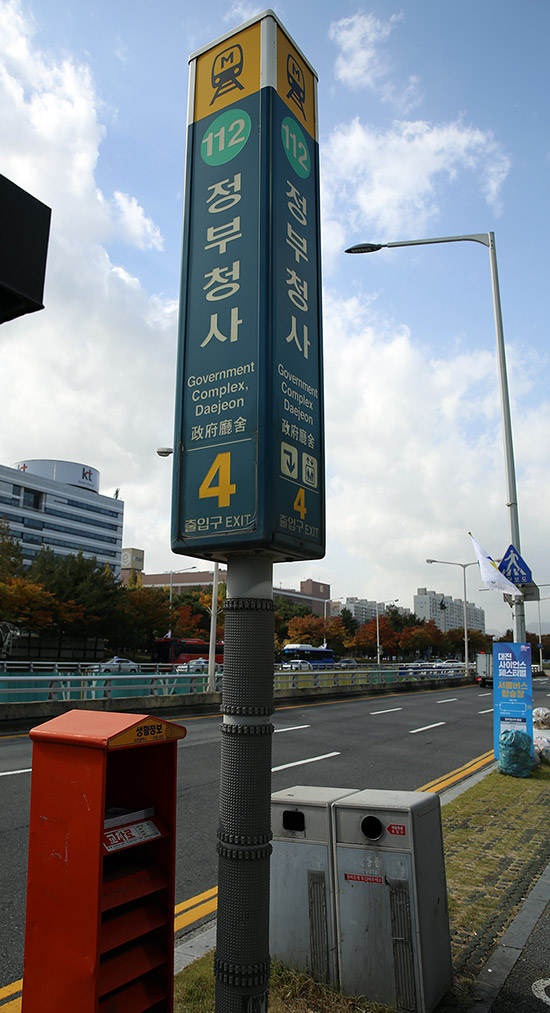
Here is a sign stating the station can be used as a shelter (대피소, 待避所, daepiso) in case of an emergency.
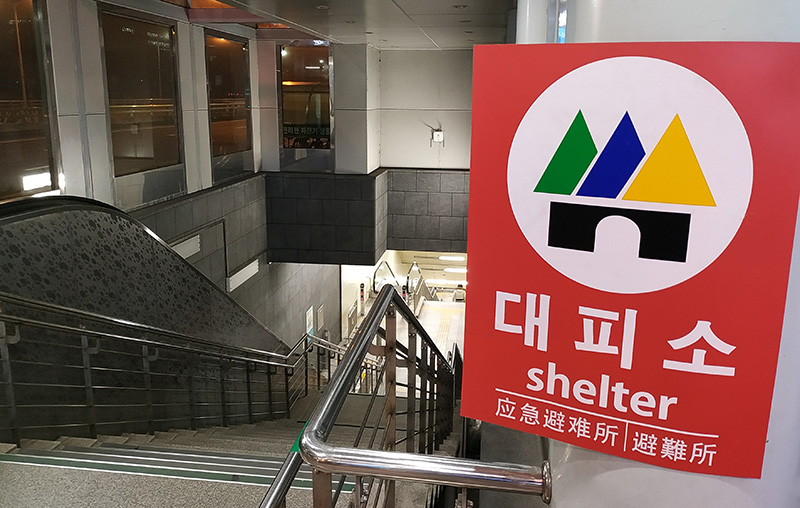
Sometimes there are maps just inside the entance to a subway station telling where major buildings are and also the various entrances, including elevators. The bottom right of this map also shows the times for the first train that comes and the last train that comes to this station. If you want a closer look, click the image to see a larger size.
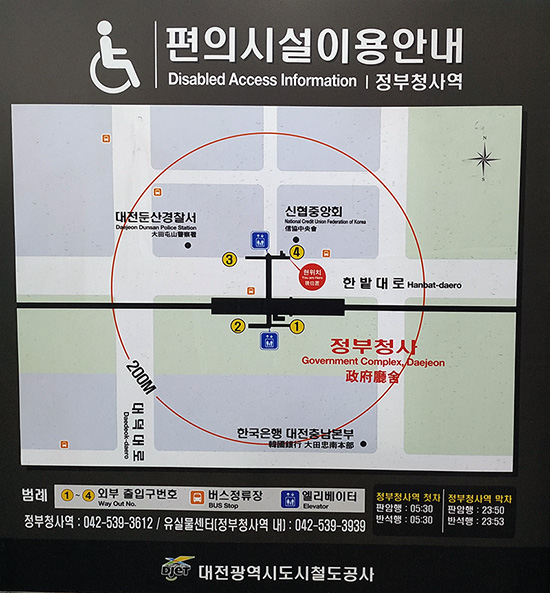
Within the station as well you’ll see signs telling which exit number is where, and the names of apartment complexes, police stations, major stores, or other large infrastructure that is accessible via that exit. This sign lists off the location information for six exits.
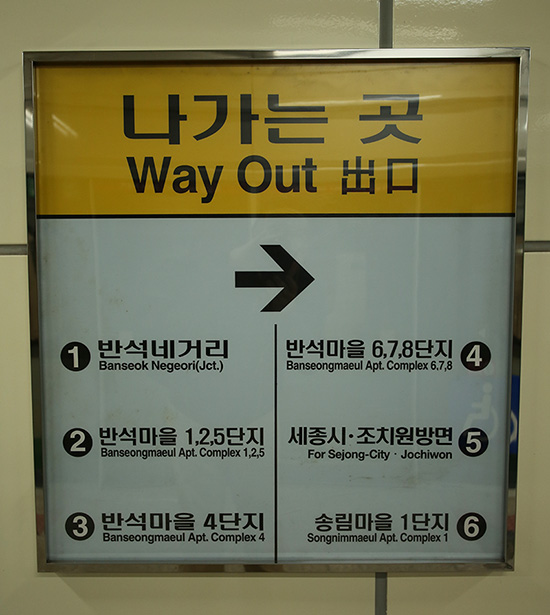
While some stations originally had wheelchair escalators installed at stairwells, this is becoming less common as it requires station staff to work the equipment, disrupts the flow of people, and an elevator is much simpler, easier, and faster. Most if not all stations have good elevator coverage in both the public and paid areas. Here is an image of a freestanding elevator at Seodaejeon Negeori Station in Daejeon. Sometimese elevators and stairs are located near each other, sometimes not.
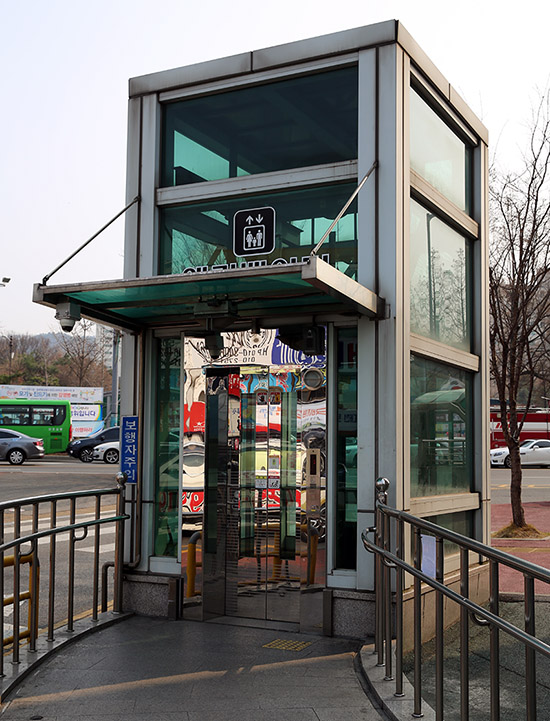
As these elevators are used by electric wheelchairs, there are some warning signs telling people to be careful not to hit the elevator doors.
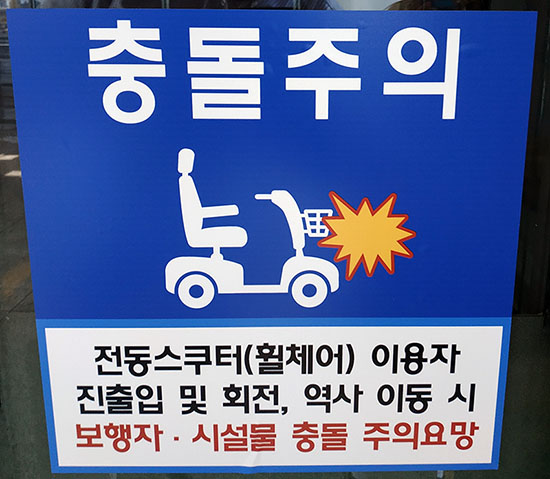
If you already have a transport card, you can simply go to the paid area by scanning your card. If you need to get a single-use ticket, you can get one from a machine near the paid area. Prices will be higher for single-use tickets, and highest for adults. Kids and students have discounted prices and senior citizens can ride for free. Here is a chart from a station in Daejeon. We see the price is in two tiers; up to 10km and beyond 10km. The prices in the middle are for a token (single-use) and prices on the right are for if you use a transport card. The three sets of prices are adults (어른, eoreun), adolescents (청소년, 靑少年, cheongsonyeon), and children (어린이, eorini). The definition of a child is stated here as ages 6 to 12, the age range for adolescents is 13 to 18. If you want a closer look, click the image to see a larger size.
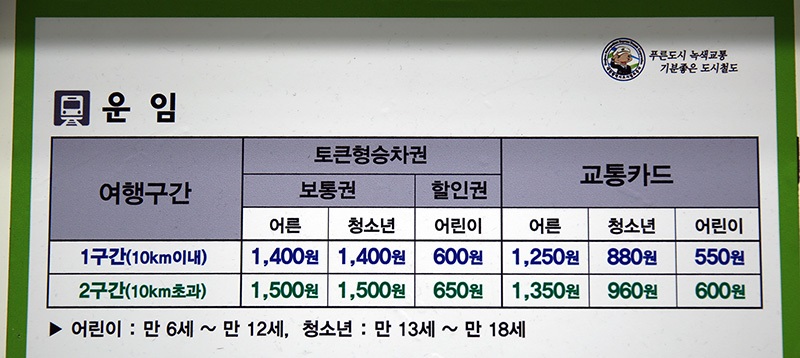
When you are ready to enter the paid area, approach the entrance gates with the card in your right hand. Scan the machine to your right in order to pay for yourself. If you scan to your left, you’ll be paying for someone else to enter the system. This also means that person will have trouble exiting the system as their card never officially paid to enter.

Note that the gates to the right have a green arrow, which tells you these terminals are available and also telling where to walk once scanning your card. The next two machines have a symbol indicating you cannot enter. The green arrows also change to this once someone else on the other side scans their card, which means you cannot enter until they walk through. Some gates are dedicated entrance or exit only, others are first come first serve. At the far end is a metal gate which is either unlocked or becomes unlocked when a transport card is scanned. These are very helpful for those in a wheelchair or if traveling with luggage. They are also used by staff to bring large items through the gates.
Sometimes you scan the card but there is a numeric error message. Some stations post a list of error messages at the entrance to the paid area, but these can be difficult to find and the error message disappears rather quickly. Here is the list of error messages presented at the Seoul Subway. Click the image to see a larger version of the file.
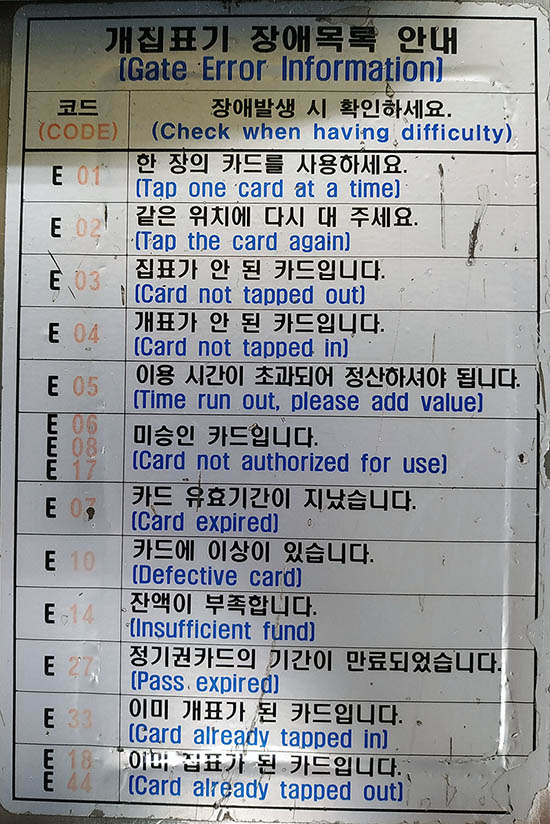
While there are peak times with more trains and off peak time with less trains, it is important to know that trains do not run 24/7. When a station is close to closing time, staff usually tell people when the last train is so they can decide if they will scan their transport card and run the risk of missing the last train. After the last train has left the station and all passengers have left, it is harder to enter the paid area but the non-paid areas are still open and will remain open throughout the night. When stations and lines are closed, rail operators take this opportunity to check the system for repairs, clean vehicles, upgrade equipment, etc.
Each operator determines their own timetables but they do coordinate as some passengers will try to transfer so it makes sense for the last trains to finish at roughly the same time. The timetable in general and more specifically the last train will run at different times on a weekday, a Saturday, and on a Sunday or national holiday. Timetables are posted on walls and are within metro smartphone apps. While most of this sign is bilingual, the last stop of each train is not translated unless you look at the Remarks section at the bottom. Not all trains go to the end of the line. If you want a closer look, click the image to see a larger size.
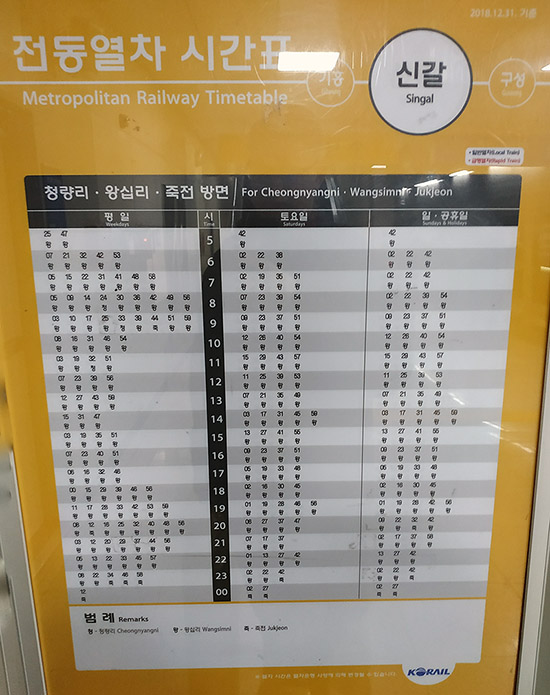
While it would be very useful to post the timetables for all trains, this isn’t very feasible as they are adjusted on occasion. The image shown above has a date in the top right corner saying when it was last updated.